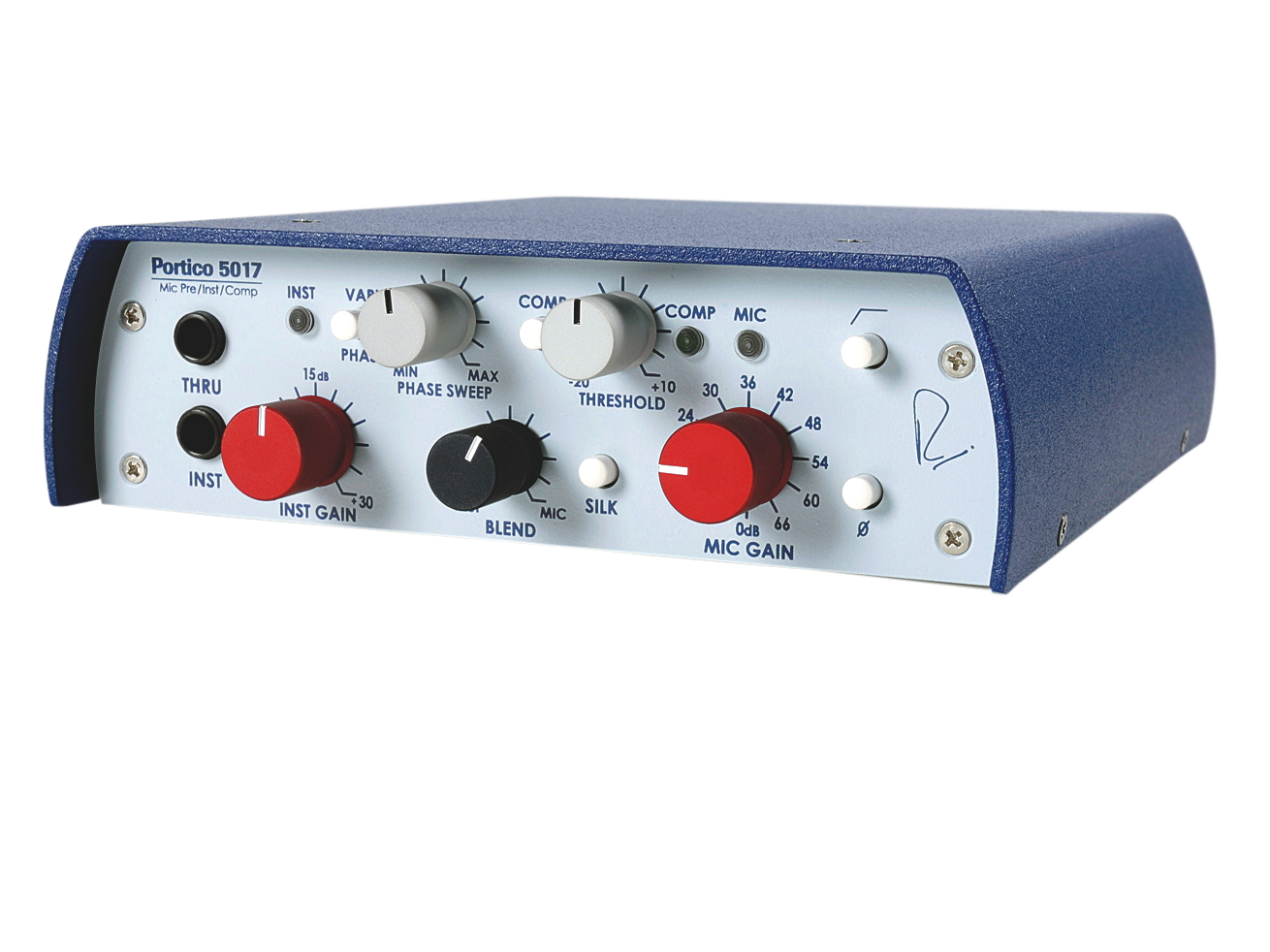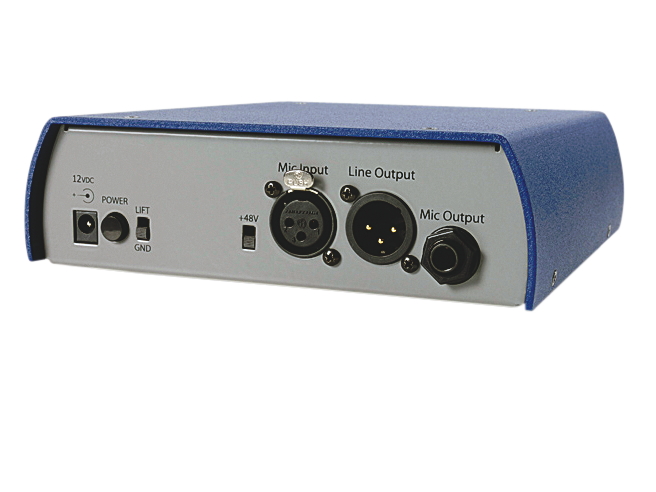MusicRadar Verdict
Mobile preamping and recording may be its raison d'etre, but this is a high-quality studio tool, too.
Pros
- +
Vari-phase control. High preamp quality. Low power consumption.
Cons
- -
High quality means a high price.
MusicRadar's got your back

Rupert Neve Designs Portico 5017

Rupert Neve Designs Portico 5017
The robust curved metal casing of the 5017 houses a two-channel preamp (Instrument and Mic) with a compressor, variable phase control and Silk enhancement.
The mobile recording focus of the unit is augmented by the power supply requirement: 9-15VDC drawing 12W. Though a PSU pack is supplied one can easily run this off a car battery for all you roadtrippin' songwriters.
"It's a somewhat utilitarian dynamic process that provides a good degree of subtle and unobtrusive control."
The rear panel features the power socket/switch, main I/O, ground lift and +48v switches. The two transformer balanced outputs (TRS and XLR) provide a mic preamp only and a blended main output respectively. The Blend knob at the front controls this main output balance between the two channels.
The pre has been designed so that the XLR input can also be used for line level sources, as has the front-panel instrument preamp input (TRS).
Sensible gain
The gain structure of the 5017 is a sensible balance of usable range and electrical conservation so that there is just enough gain and headroom to get most pickups and mics to a full recording level by the end of the dials.
The instrument input provides 30dB of gain while the mic gain is a stepped control that provides 66dB in 6dB steps. Both amps sacrifice nothing in the name of portability and possess excellent sound quality.
Full frequency range clarity and a distinct lack of tonal bias create reliably high-class results, and with a variable phase control on the loose this is important: poor phase linearity + phase adjustment = unholy mess.
The Vari-phase control, when engaged, adjusts the instrument input phase relative to the mic input, a useful tool for acoustic/electric guitar/bass recording and re-amping.
In combination with the phase polarity reverse switch there is full scope for finding the most complimentary phase relationship between the two sources - they will never be in perfect phase at all frequencies, but there are usually a couple of points where the combined sound is pleasant.
This is simple to use and allows a tonal creativity that cannot be achieved with EQ. The Silk button engages this trademark harmonic enhancement effect on both outputs.
Like many harmonic distortion effects, the character is driven more by low frequencies and wide band sources, and in these cases there is a slight thickening of the signal without dulling it at all. It is subtle but pleasant when audible.
Optical process
The opto-coupler-based compressor is fixed ratio (2:1) with a bypass switch and threshold knob. The time constants are also fixed, though moving a jumper on the PCB accesses slower attack/release responses.
The behaviour is mostly transparent when used sparingly, as expected from an optical compressor regardless of speed, but higher threshold settings can obtain a good percussive characteristic with the default fast setting.
It's a somewhat utilitarian dynamic process that provides a good degree of subtle and unobtrusive control. Another set of PCB jumpers can move the compressor out of the blended signal path and apply it solely to the mic preamp signal.
Though the two preamps and compressor have signal present LEDs there is no power state indicator, and the white buttons against the light blue/grey front panel make it hard to see whether they are in or out.
There is no doubt this is a high-quality mic and instrument preamp that provides a sensible range of routing and processing options. As such, it makes a great practical and creative tool for mobile musicians, producers and engineers, especially thanks to the sturdy yet lightweight build and low power consumption.
As with all Rupert Neve gear, you pay a premium for the quality (and thus the name), so there are cheaper units providing similar functionality - but having spent some time with the 5017 we must admit there few comparable for quality per pound.
Future Music is the number one magazine for today's producers. Packed with technique and technology we'll help you make great new music. All-access artist interviews, in-depth gear reviews, essential production tutorials and much more. Every marvellous monthly edition features reliable reviews of the latest and greatest hardware and software technology and techniques, unparalleled advice, in-depth interviews, sensational free samples and so much more to improve the experience and outcome of your music-making.
“A synthesizer that is both easy to use and fun to play whilst maintaining a decent degree of programming depth and flexibility”: PWM Mantis review
“I feel like that song had everything we needed to come back with”: Bring Me The Horizon’s Lee Malia on Shadow Moses, its riff and the secrets behind its tone, and why it was the right anthem at the right time
“I said, ‘Are we sure we can write a song about death?’”: The story of Mike + The Mechanics' classic No.1 The Living Years










